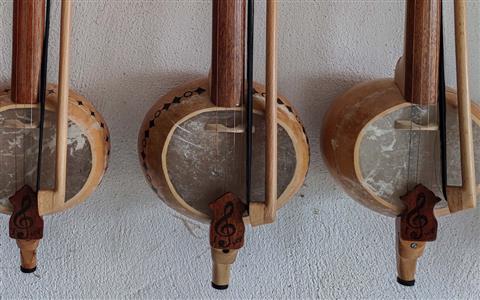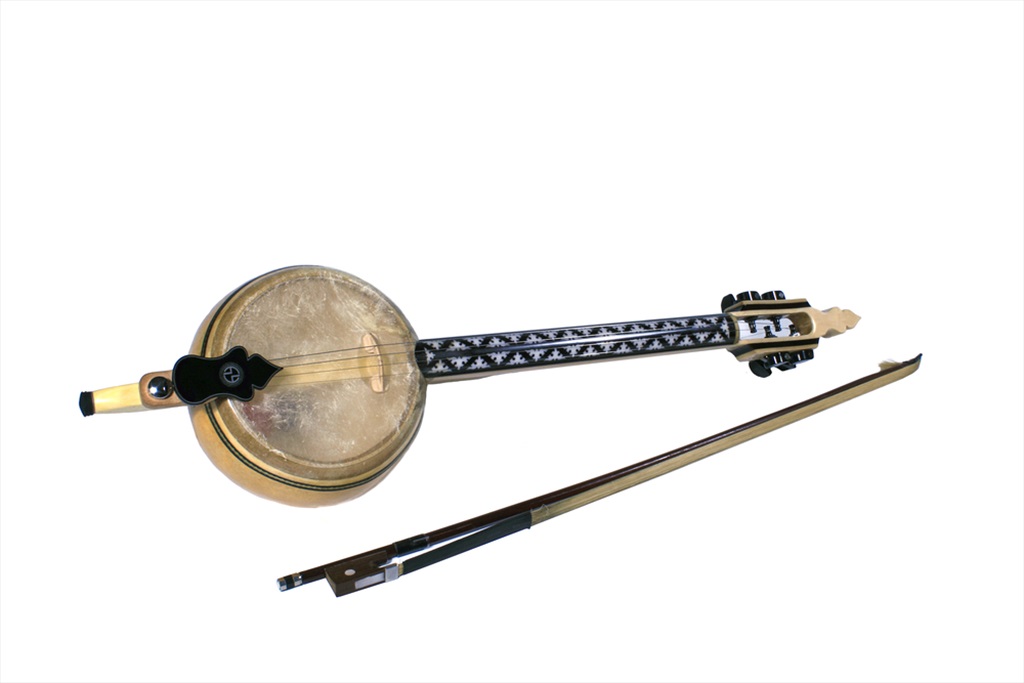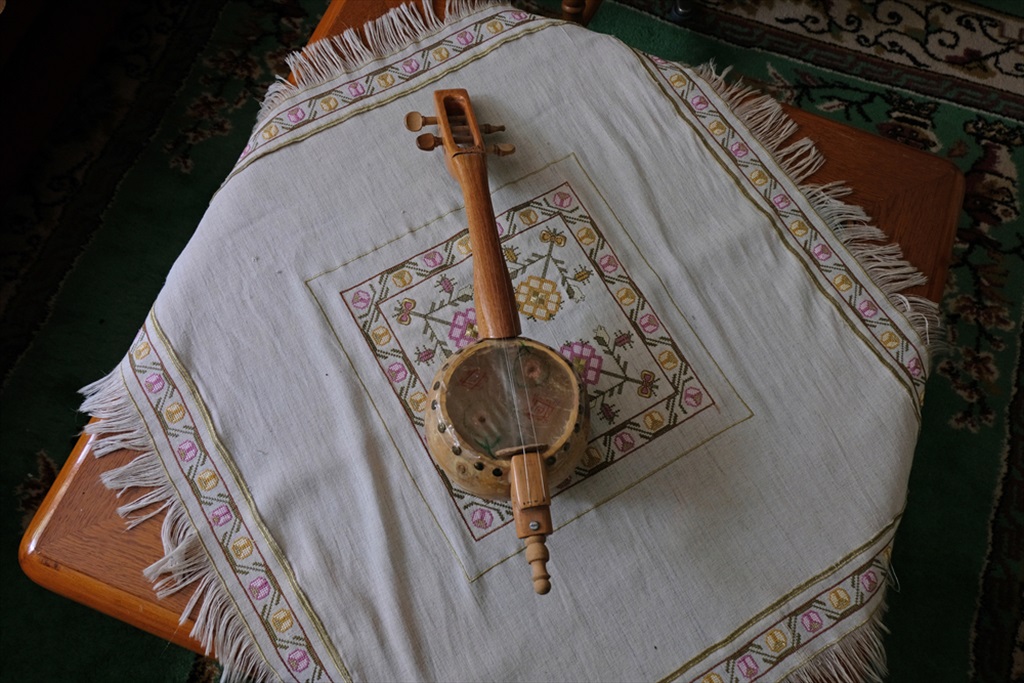The gourd violin “Kemane”, the only example of stringed, stringed and leather-covered instruments in Turkish folk music, originates in Central Asia. The few production masters of the violin, which is widely used in the Aegean Region, especially in Western Anatolia, around Izmir, live in the Aegean region, around Izmir and Muğla.
It is known that mankind has made instruments by using natural materials around the world since ancient times. The use of gourd, which is seen in a wide geography from Asia to Africa and found in various forms in nature, in instrument making dates back to ancient times. Until today, many instruments have been made from gourd. But gourd in Turkey has reached its most beautiful form and sound “Kabak Kemane” name. Kabak Kemane draws attention with its unique burning sound and instrument technique. Kabak Kemane stands out as the oldest and least changed folk instrument of the Turks.
The gourd, whose Latin name is Lagenaria siceraria, is a plant that grows from cucurbits as ivy. This plant, which is full and very heavy when it is wet, turns into a hollow, hard, shelled and very light material after it dries out. Due to its hard and water-resistant body, gourd has been encountered in daily life in various ways for centuries. It has been used as a jug for keeping the water cold, a hot water container, a bath bowl, a fisherman's buoy, a life jacket for swimming learners, pots in kitchens and lampshades in homes. Gourd is also widely used in musical instruments.
From Iklığ to Violin
The Turks, inspired by the sound of the arrow and bow, which are one of their oldest weapons, called the stringed instruments ık = arrow, okluk, ıklığ, meaning that they were played with the arrow. This name was replaced by the Persian word Keman (violin), which also means bow, and then turned into Kemane. It is one of the oldest and least changed folk instruments of the Turks. The gourd sound box of the gourd violin was inspired by relative instruments over time and was replaced by a wooden bowl. However, the number of Kemane made from gourd is still quite high. In the past, the strings were made from horse tails, but today intestines and silk strings are used. Because of its long handle, the melody is performed on the first string and the second and third strings are used as brew strings. It still attracts attention as the most important instrument of Sufi music today.
Kemane, one of the most important instruments of “Yörük Turkmen music”, is still used in Teke region and around Izmir, which includes Antalya, Isparta, Burdur and Muğla provinces. Today, it is possible to find craftsmen who continue to build in Izmir and its surroundings.
While the Kemane was originally with two strings, it first came out to three strings over time, and then when it started to be used in professional societies, the number of strings reached four. There are also six-stringed Kemanes today. Kemane has moved into the top row of the folk instruments in Turkey. Today, besides local producers of Kemane, there are higher education institutions that provide training in its playing and making.
Let us remind you that there are many courses in Izmir for those who want to get to know and play Kemane.





Comments
No comment left, would you like to comment?